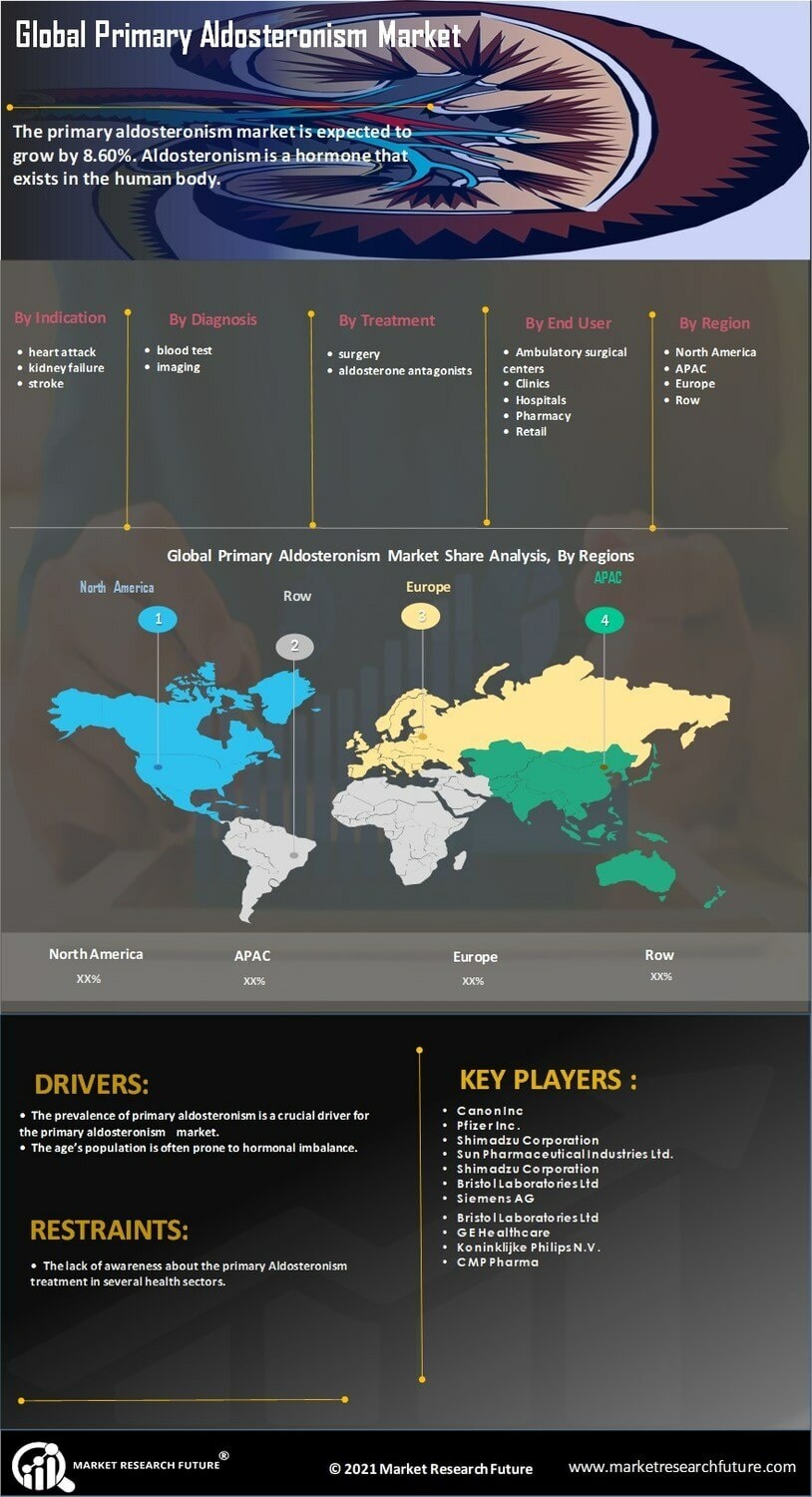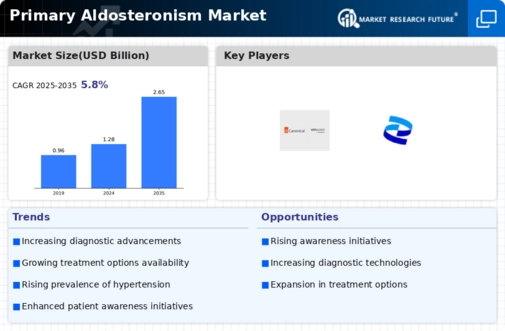Market Growth Projections
The Global Primary Aldosteronism Market Industry is projected to experience substantial growth over the coming years. With a market value of 1.28 USD Billion anticipated in 2024, the industry is expected to expand to 2.65 USD Billion by 2035. This growth trajectory reflects a compound annual growth rate of 6.88% from 2025 to 2035. The increasing prevalence of primary aldosteronism, advancements in diagnostic and therapeutic options, and heightened awareness among healthcare providers are key factors driving this growth. The market's expansion is indicative of a broader recognition of the importance of addressing primary aldosteronism within the global healthcare landscape.
Growing Awareness and Education
There is a notable increase in awareness and education surrounding primary aldosteronism among both healthcare professionals and the general public. Campaigns aimed at educating clinicians about the condition's symptoms and consequences are crucial for early diagnosis and treatment. This heightened awareness is likely to lead to more patients being screened and diagnosed, thereby expanding the Global Primary Aldosteronism Market Industry. As healthcare systems prioritize education and awareness initiatives, the market is expected to witness a compound annual growth rate of 6.88% from 2025 to 2035, indicating a robust growth trajectory fueled by informed healthcare practices.
Rising Demand for Targeted Therapies
The demand for targeted therapies in the treatment of primary aldosteronism is on the rise, significantly influencing the Global Primary Aldosteronism Market Industry. Patients are increasingly seeking personalized treatment options that address the underlying causes of their condition. The development of mineralocorticoid receptor antagonists and other novel pharmacological agents is meeting this demand. As these therapies gain regulatory approval and become available in various markets, they are expected to drive market growth. The increasing focus on personalized medicine aligns with broader trends in healthcare, suggesting a promising future for the Global Primary Aldosteronism Market.
Advancements in Diagnostic Techniques
Technological advancements in diagnostic techniques are enhancing the detection of primary aldosteronism, thereby driving the Global Primary Aldosteronism Market Industry. Innovations such as improved imaging modalities and more sensitive hormonal assays enable earlier and more accurate diagnosis. For instance, the development of non-invasive tests has made it easier for clinicians to identify patients at risk. As these diagnostic tools become more widely adopted, they are likely to increase the number of diagnosed cases, contributing to market growth. The Global Primary Aldosteronism Market is projected to expand significantly, with a forecasted value of 2.65 USD Billion by 2035, reflecting the impact of these advancements.
Increasing Prevalence of Hypertension
The rising incidence of hypertension globally is a primary driver for the Global Primary Aldosteronism Market Industry. Hypertension affects approximately 1.13 billion people worldwide, and a significant proportion of these cases may be attributed to primary aldosteronism. As awareness of the condition grows, healthcare providers are increasingly screening patients with resistant hypertension for primary aldosteronism. This trend is expected to contribute to the market's growth, with projections indicating that the Global Primary Aldosteronism Market will reach 1.28 USD Billion in 2024. The increasing recognition of the link between hypertension and primary aldosteronism underscores the need for effective diagnostic and treatment options.
Healthcare Infrastructure Improvements
Improvements in healthcare infrastructure, particularly in developing regions, are facilitating better access to diagnosis and treatment for primary aldosteronism. Enhanced healthcare facilities and increased availability of specialized care are crucial for managing this condition effectively. As healthcare systems evolve, they are likely to incorporate more comprehensive screening programs for hypertension and related disorders, including primary aldosteronism. This trend is expected to contribute positively to the Global Primary Aldosteronism Market Industry, as more patients gain access to necessary diagnostic and therapeutic services. The ongoing enhancements in healthcare infrastructure are pivotal for the market's sustained growth.



